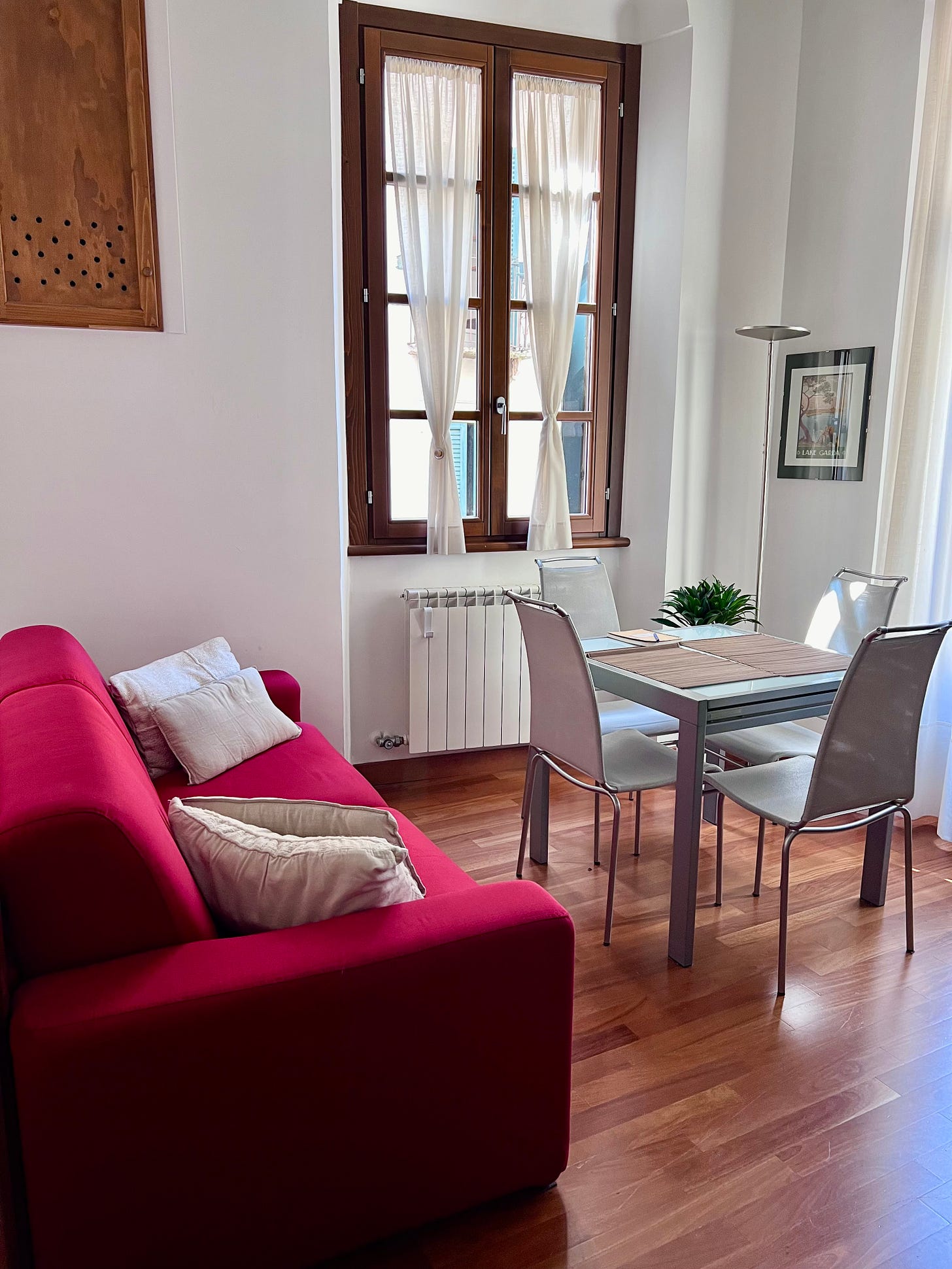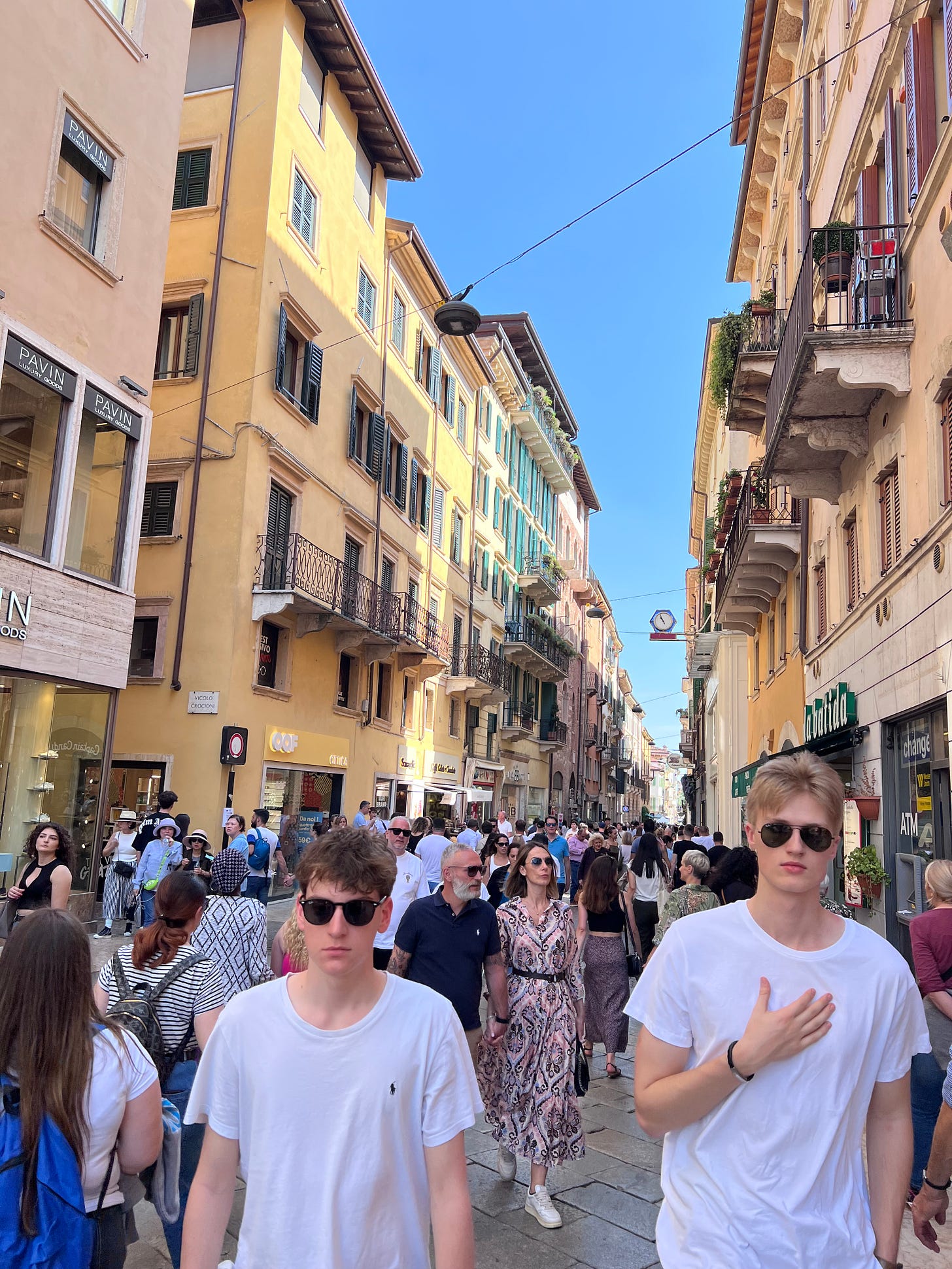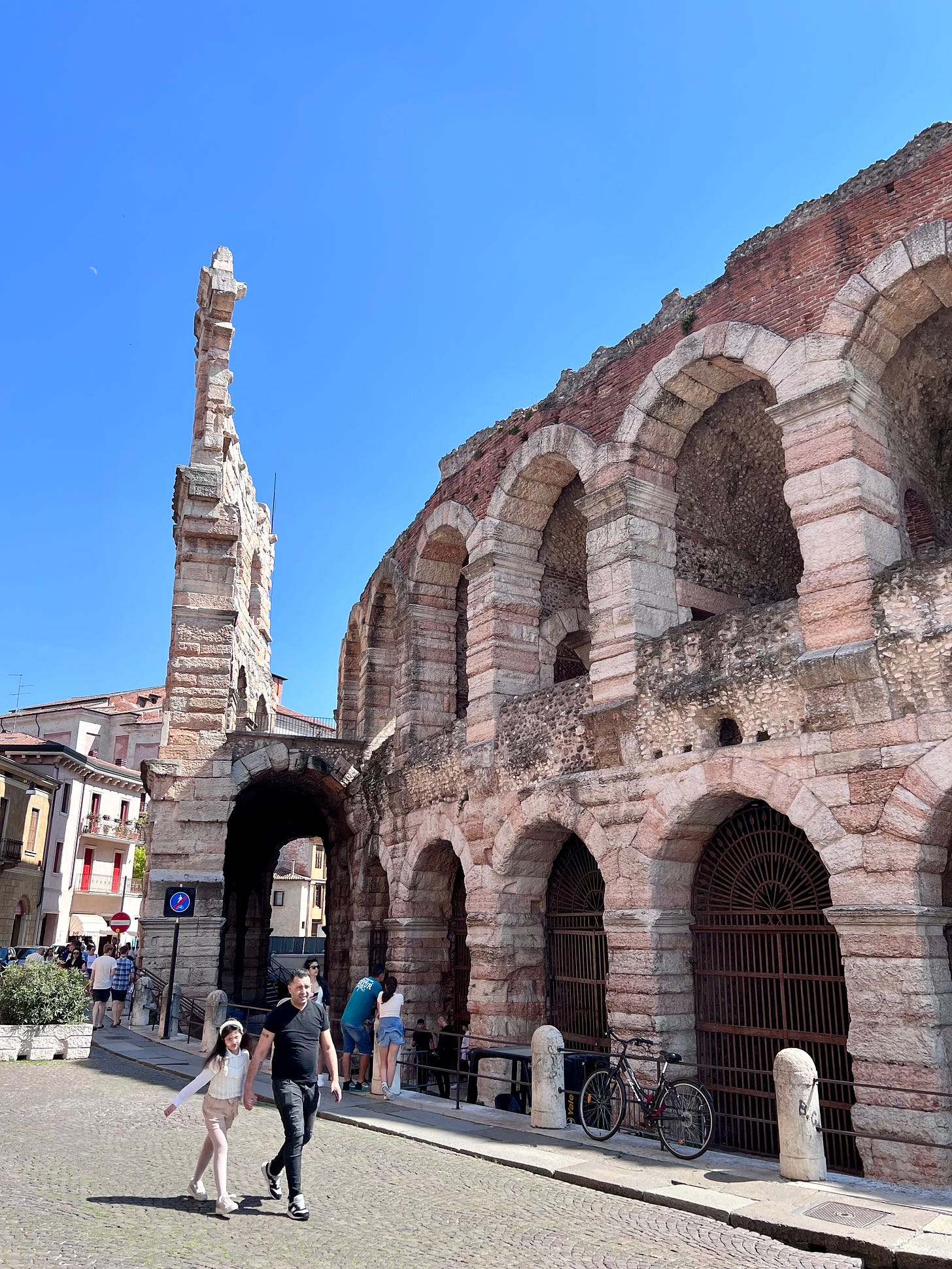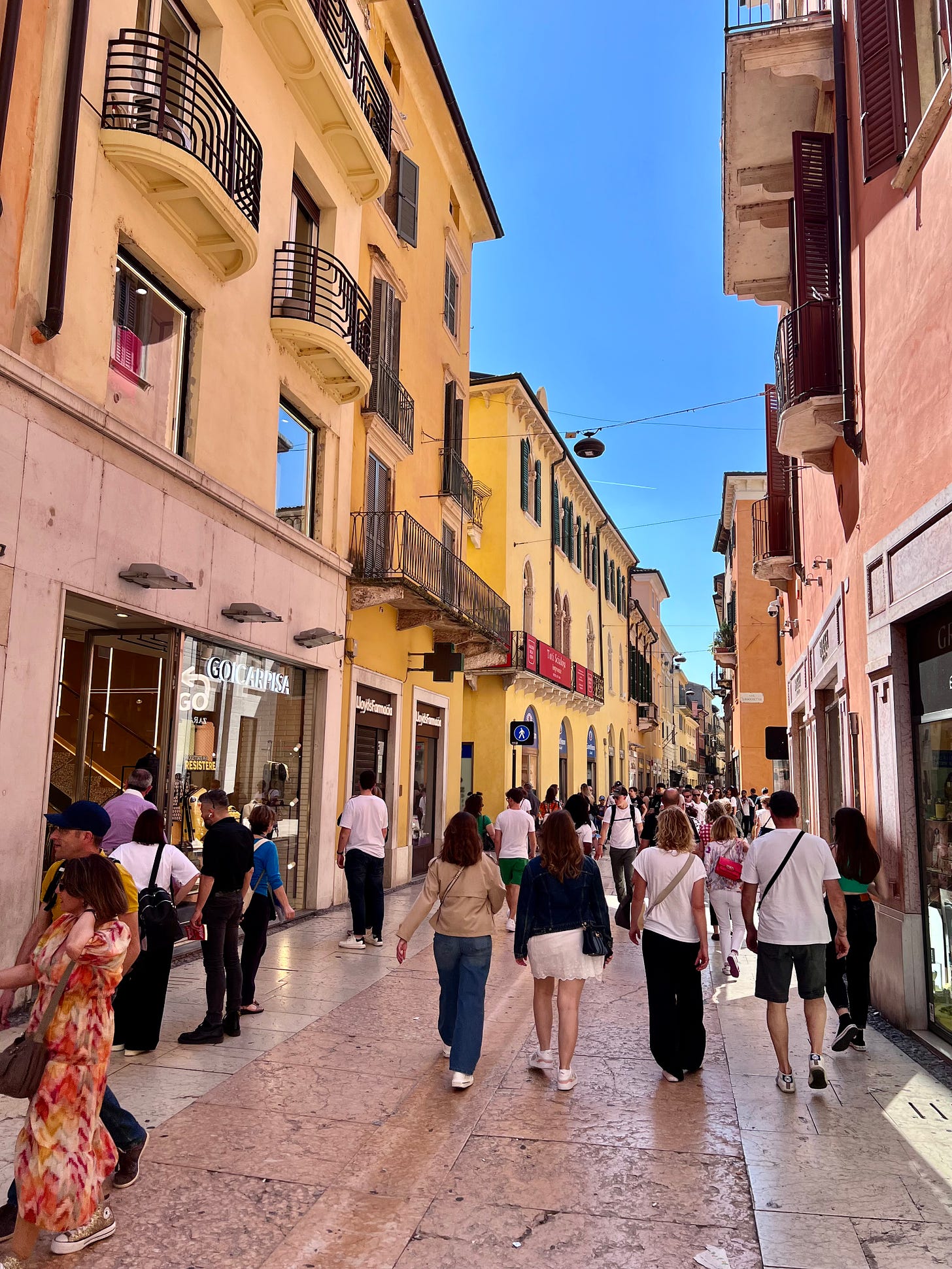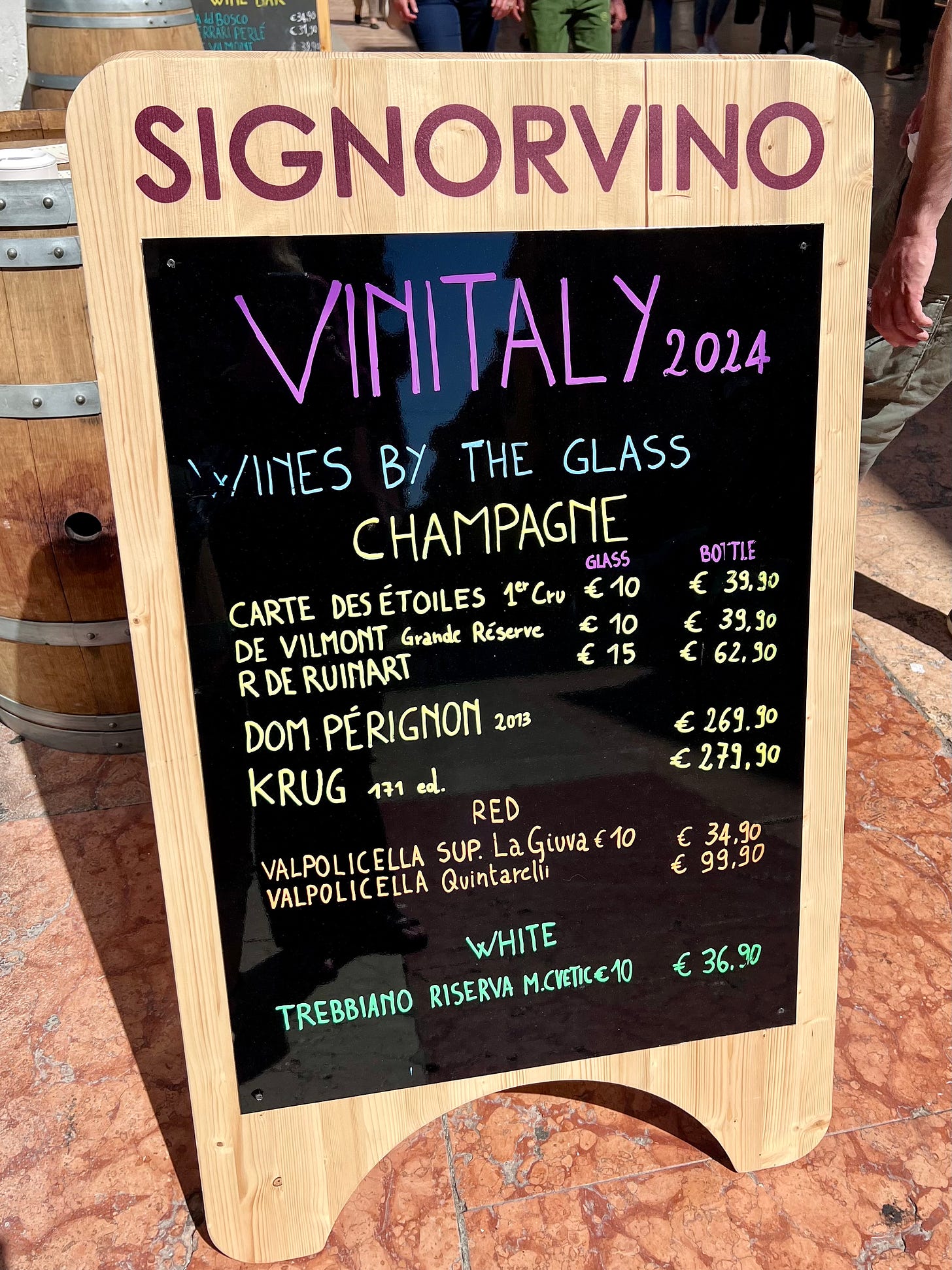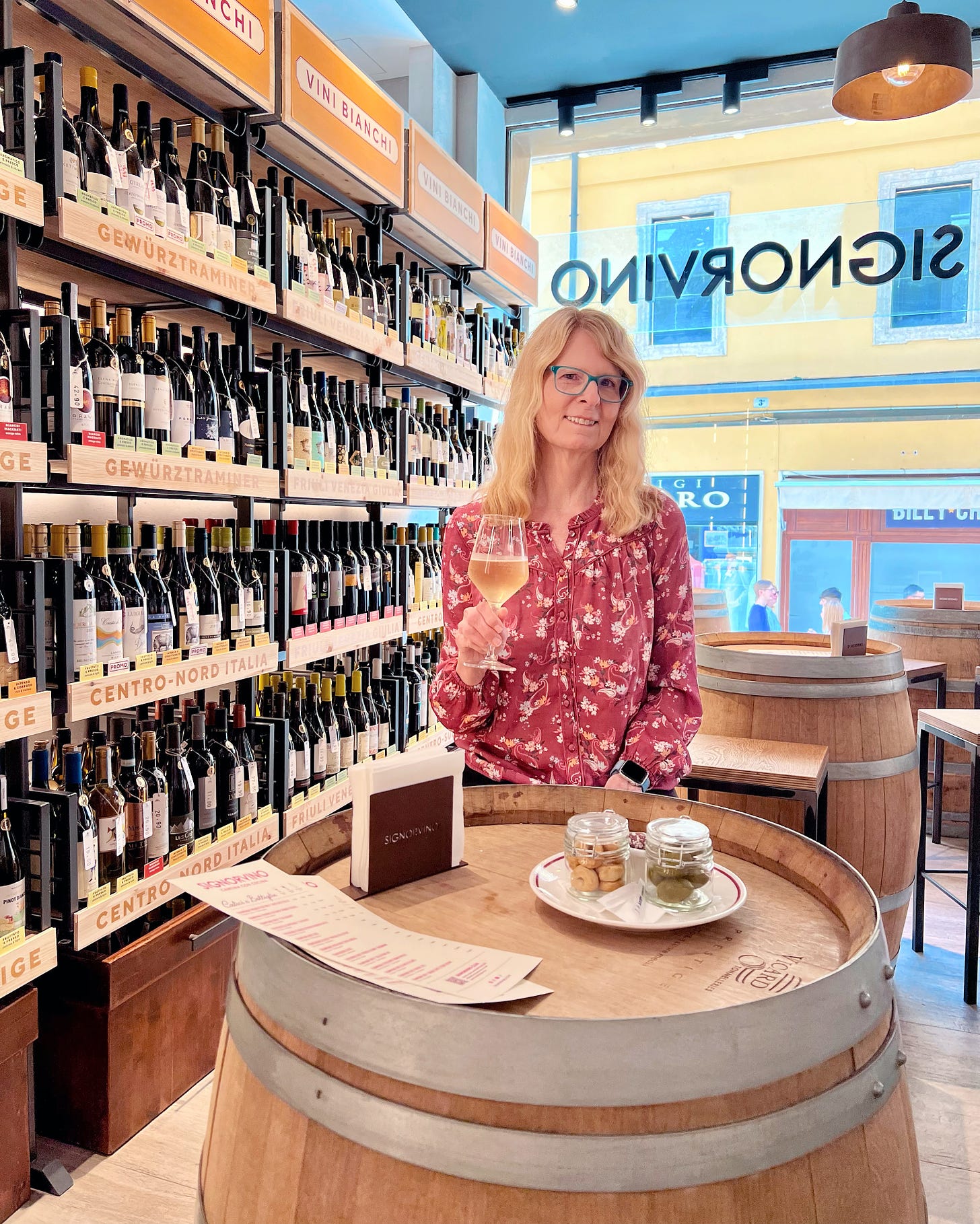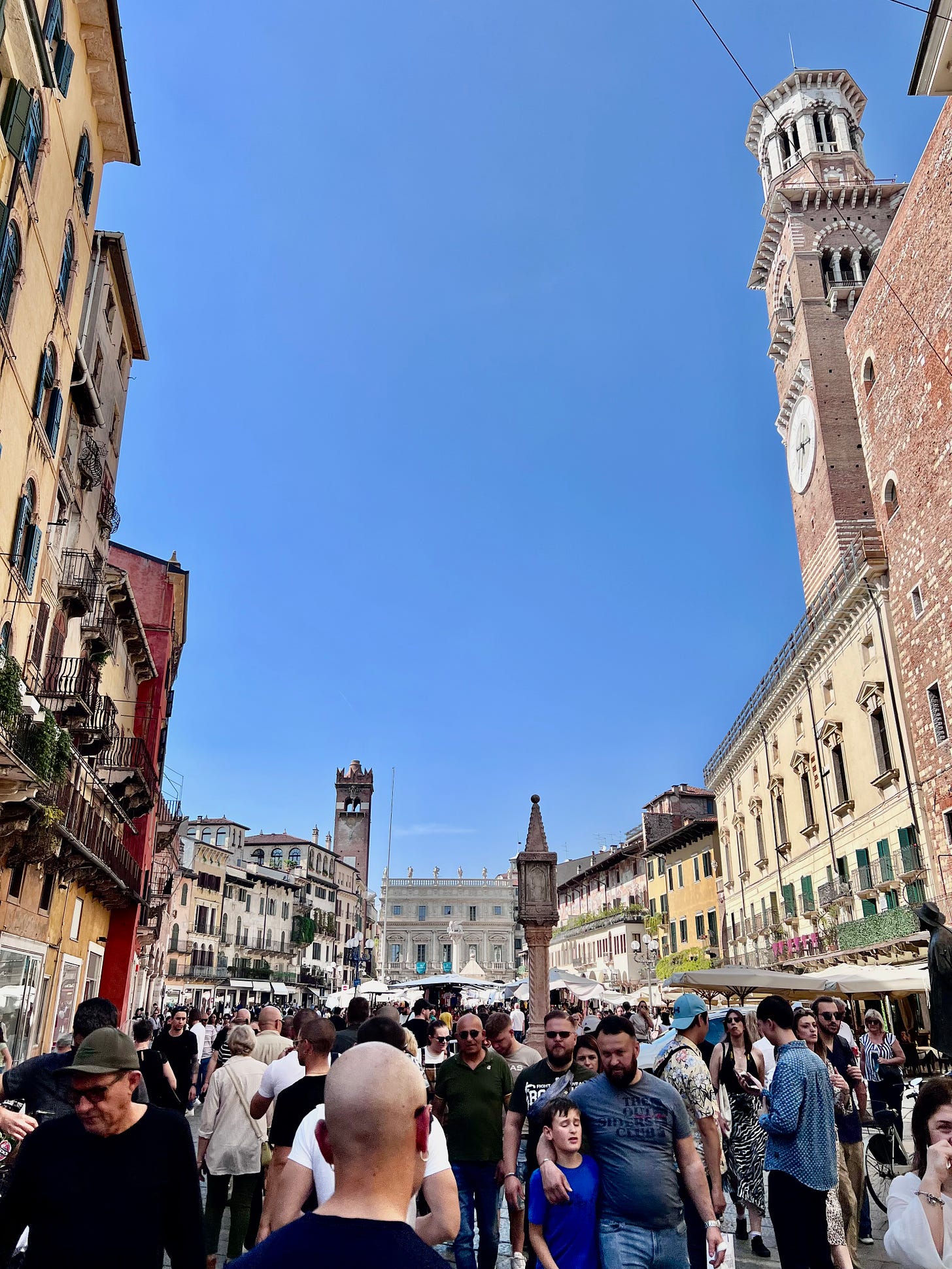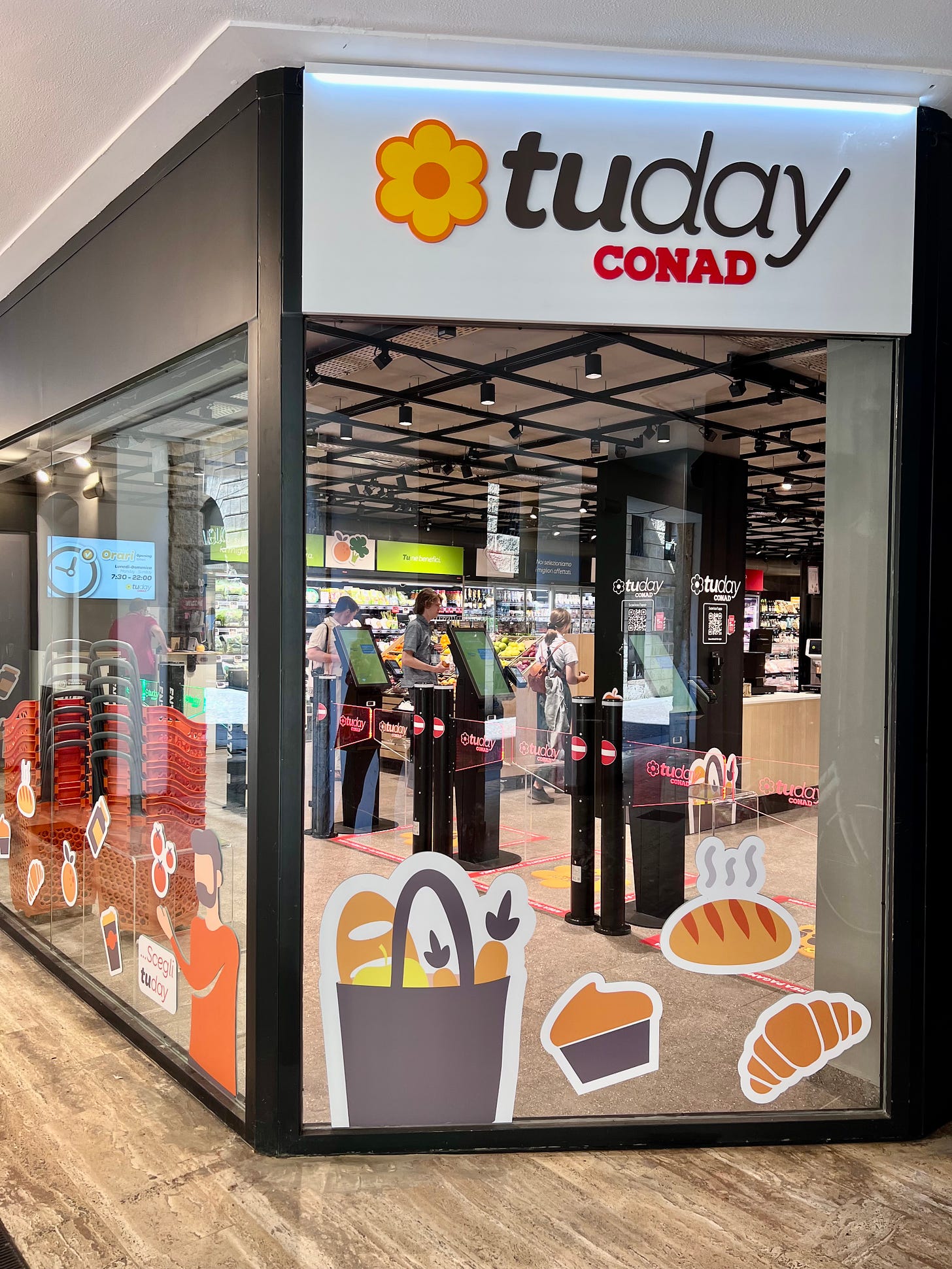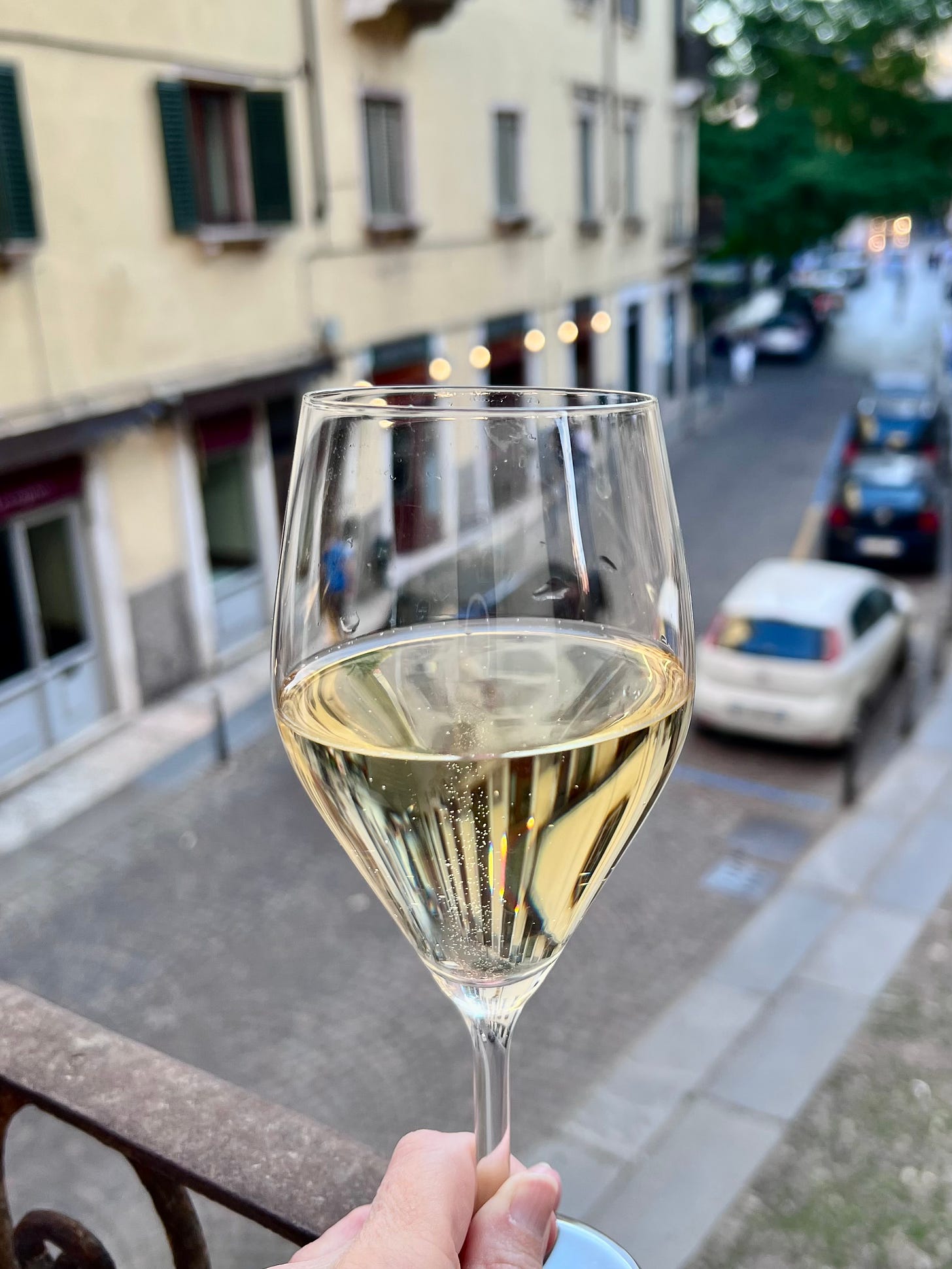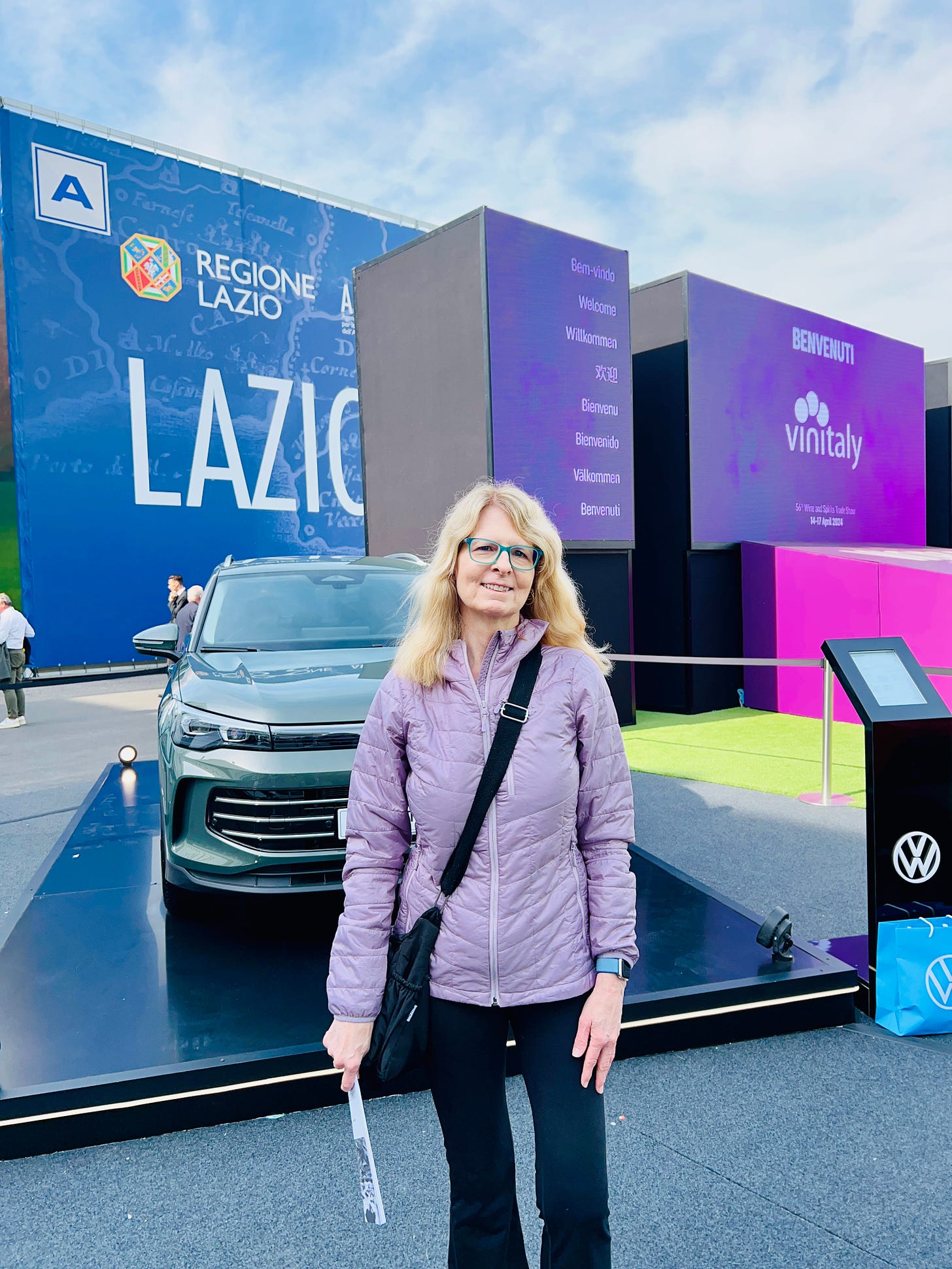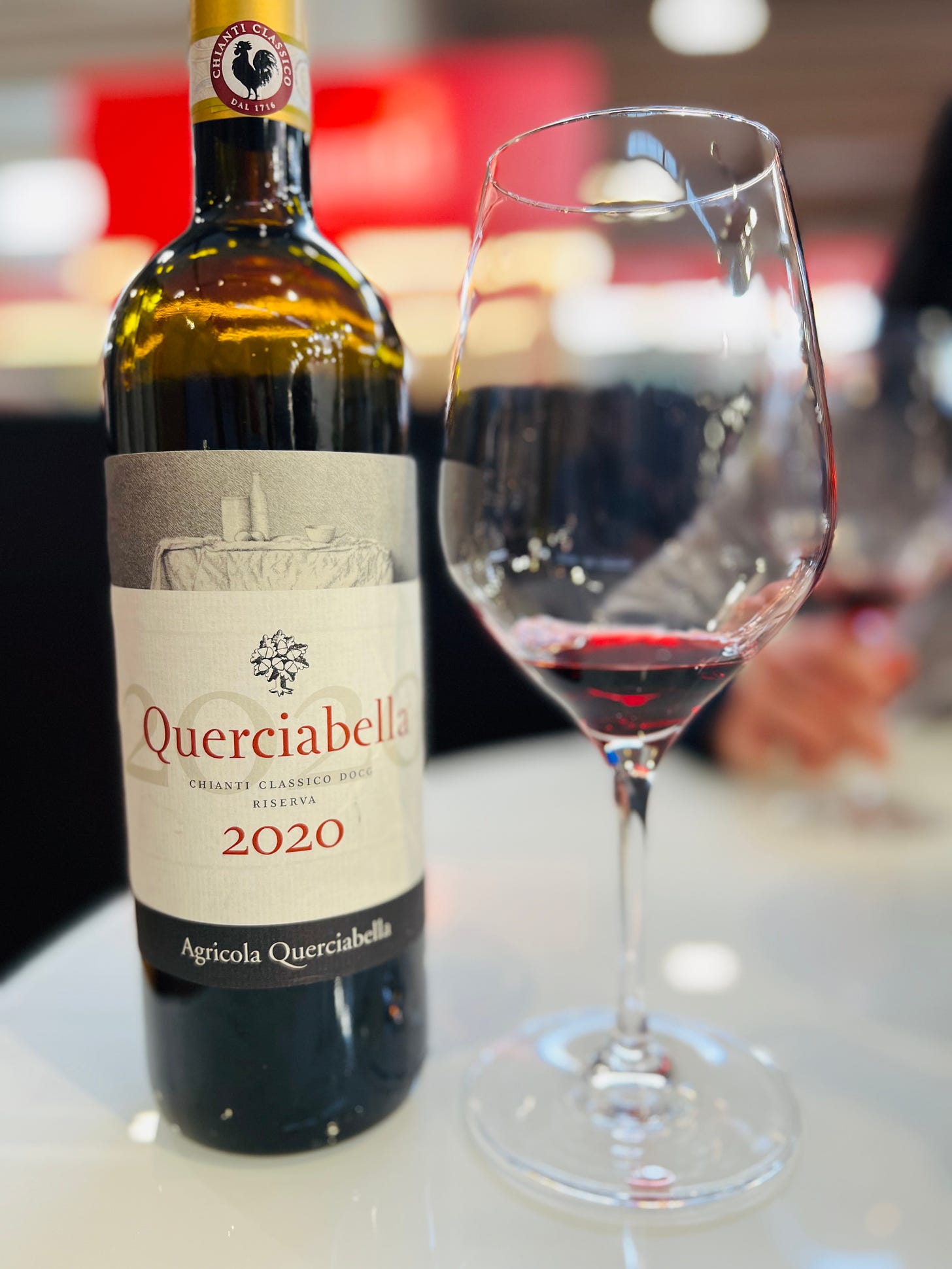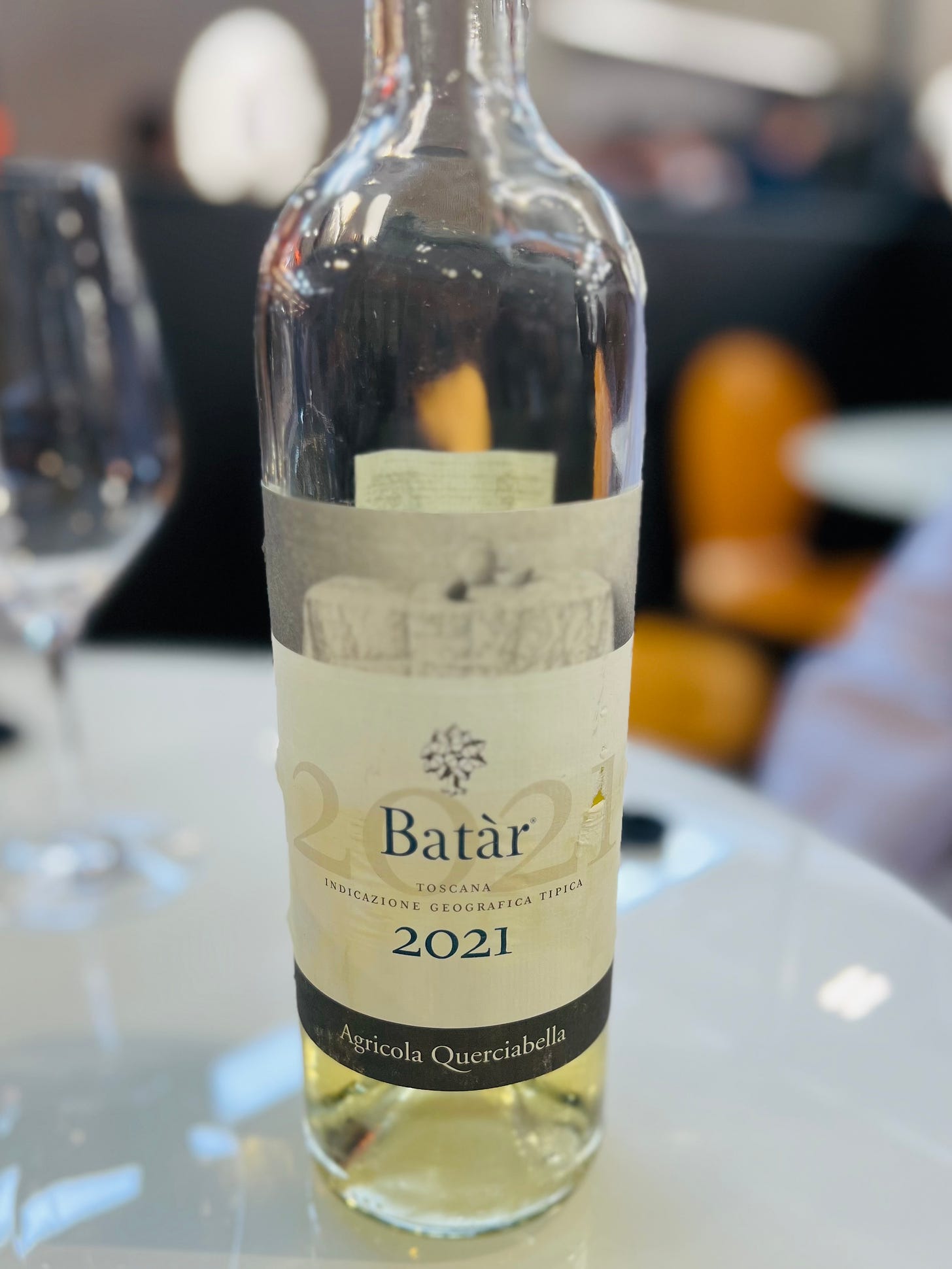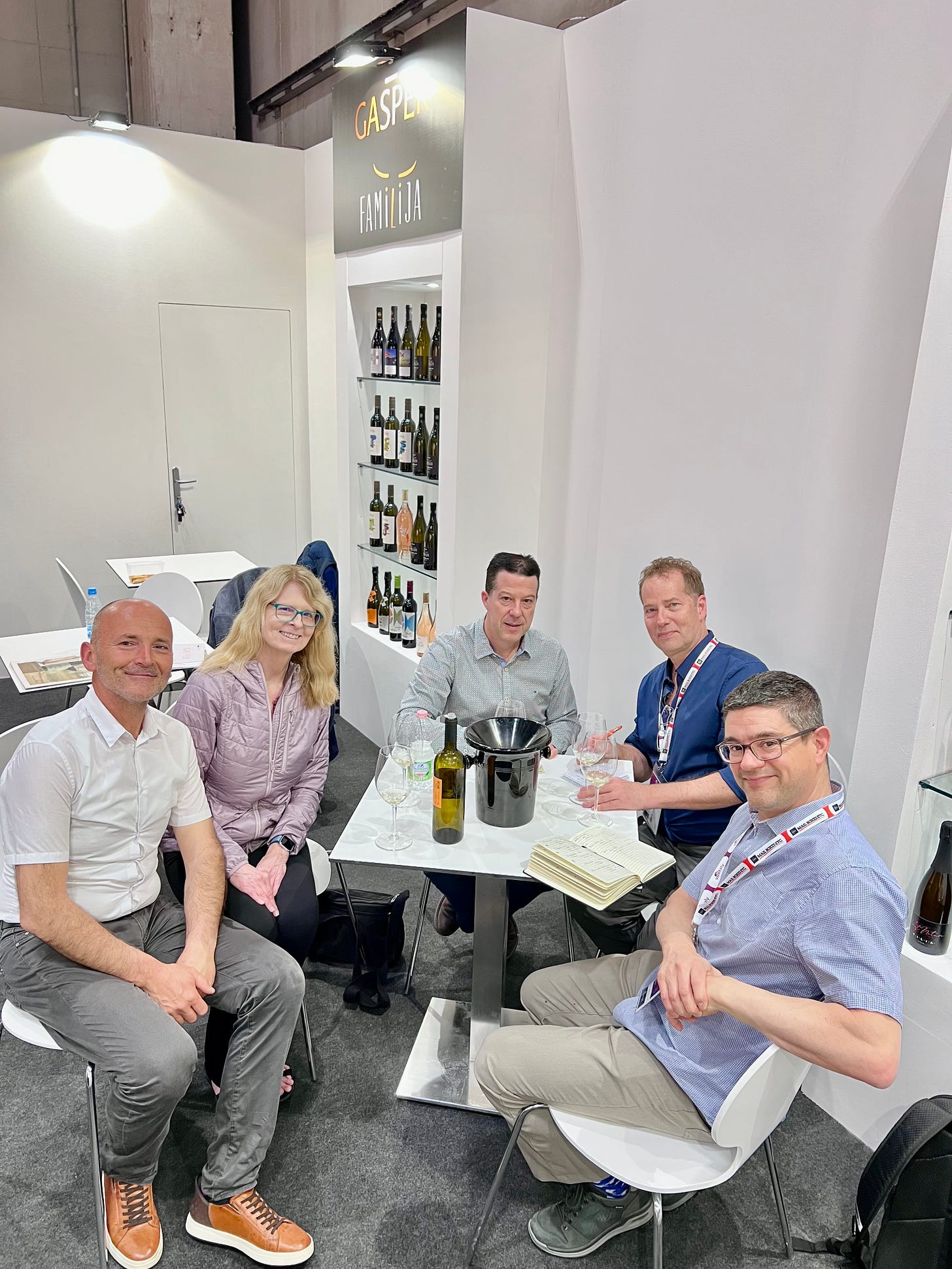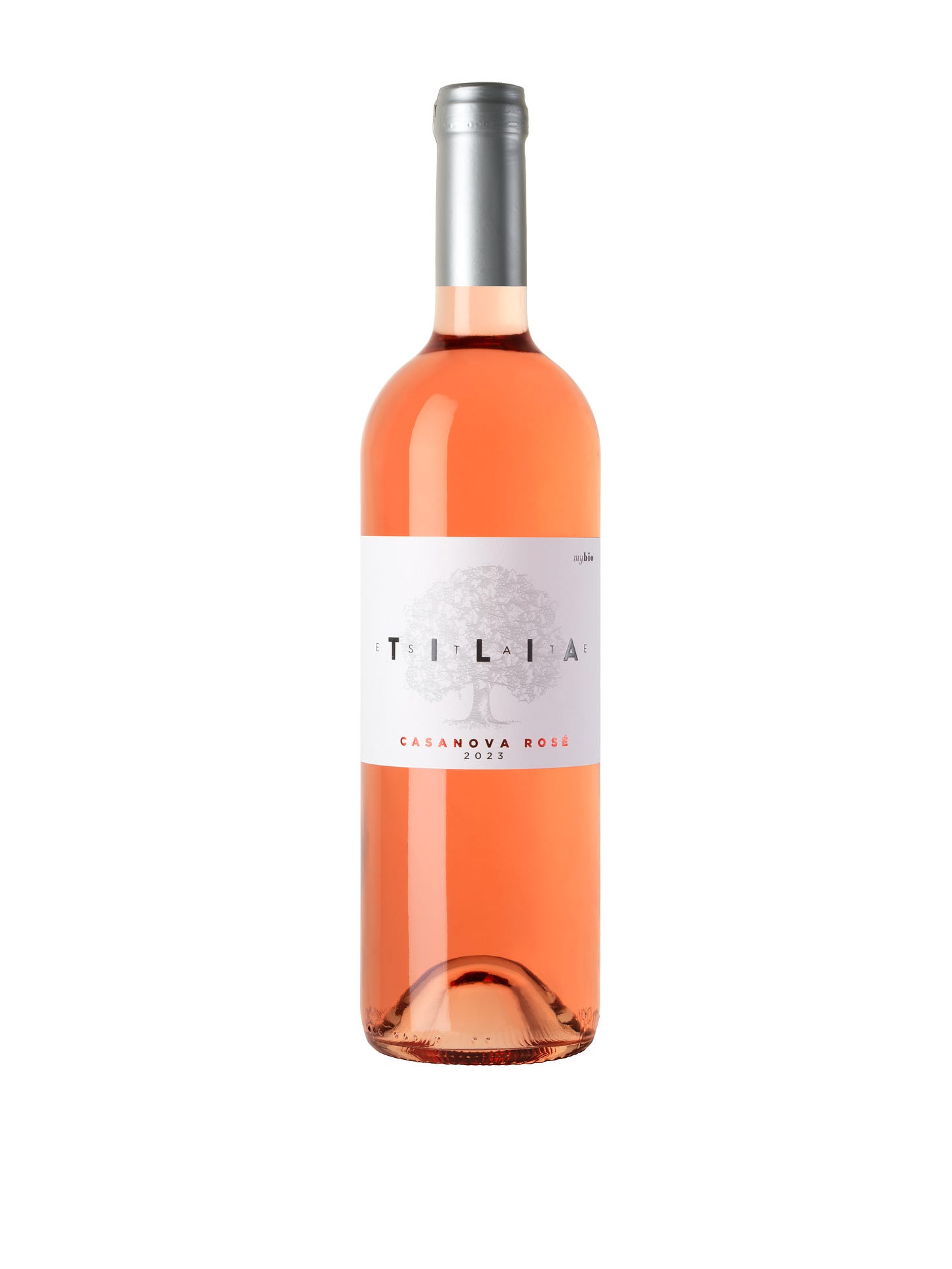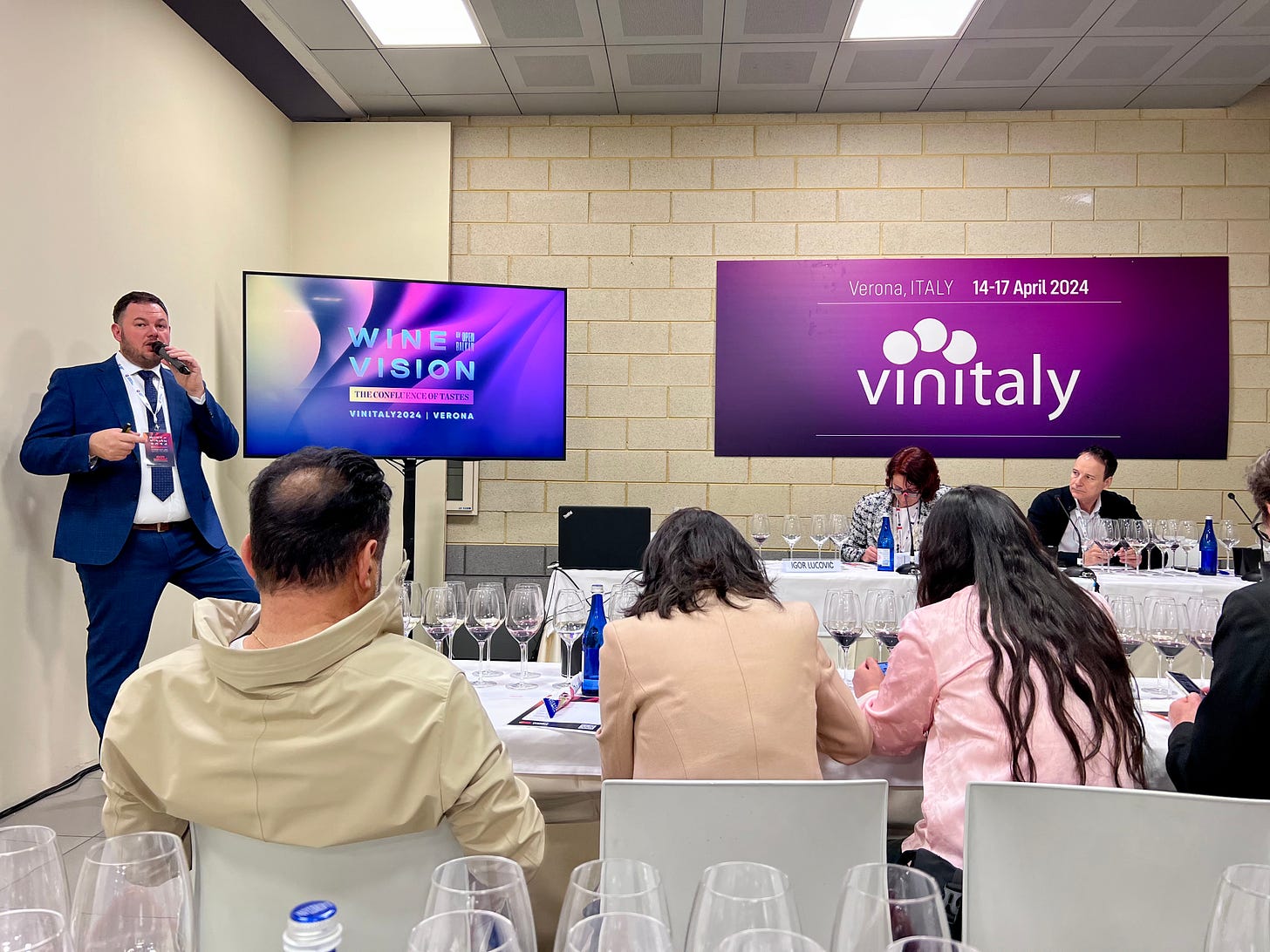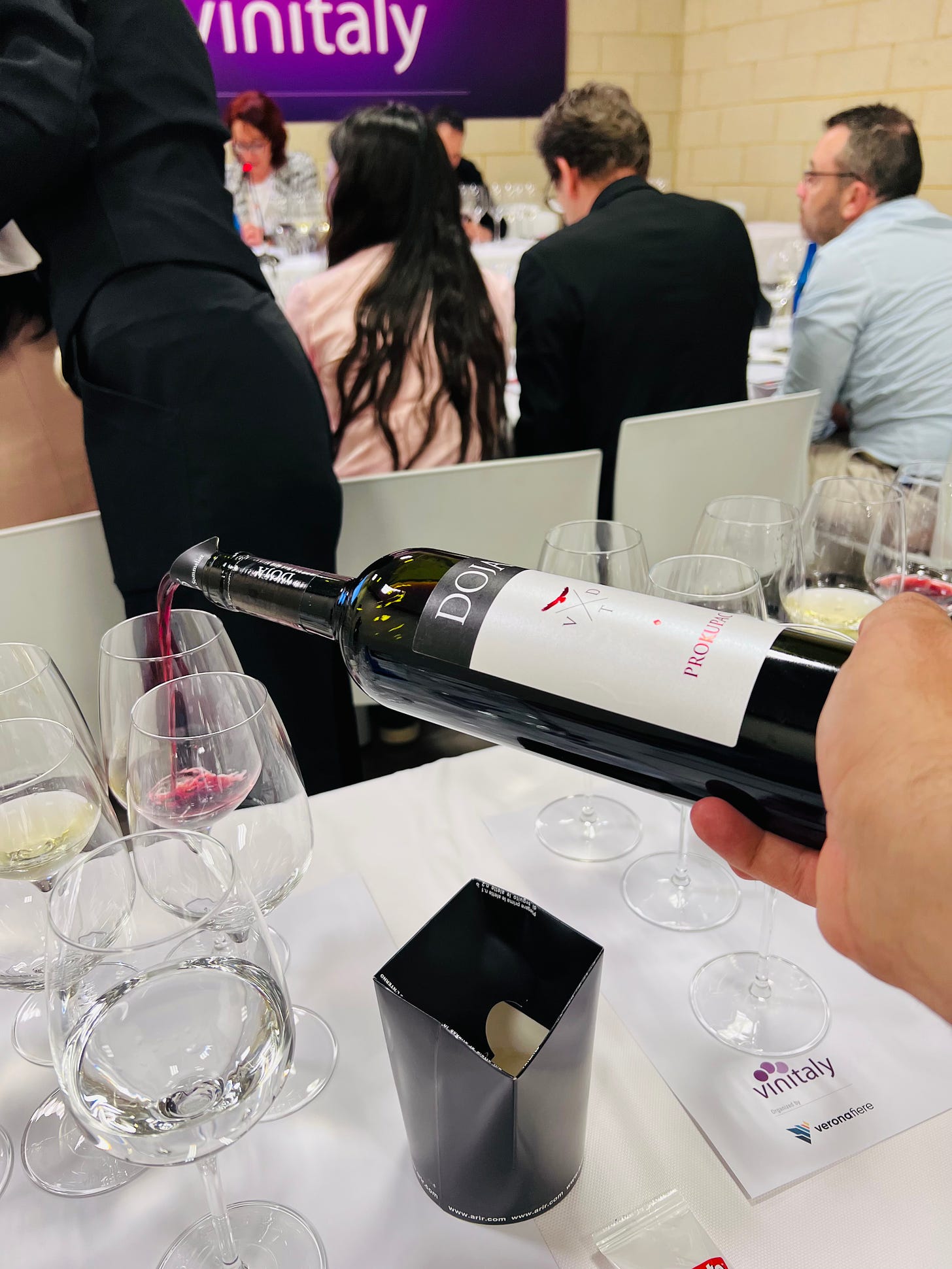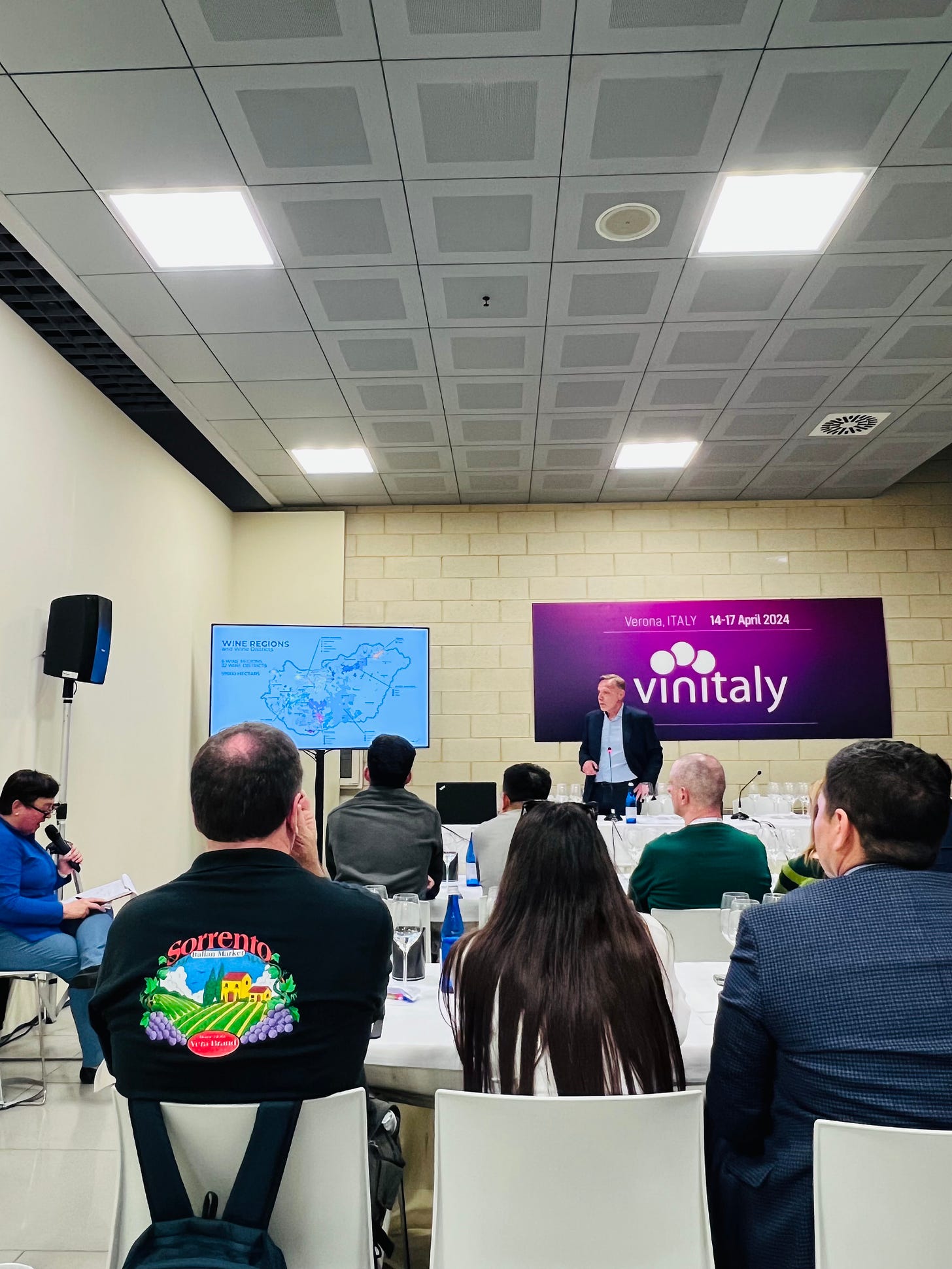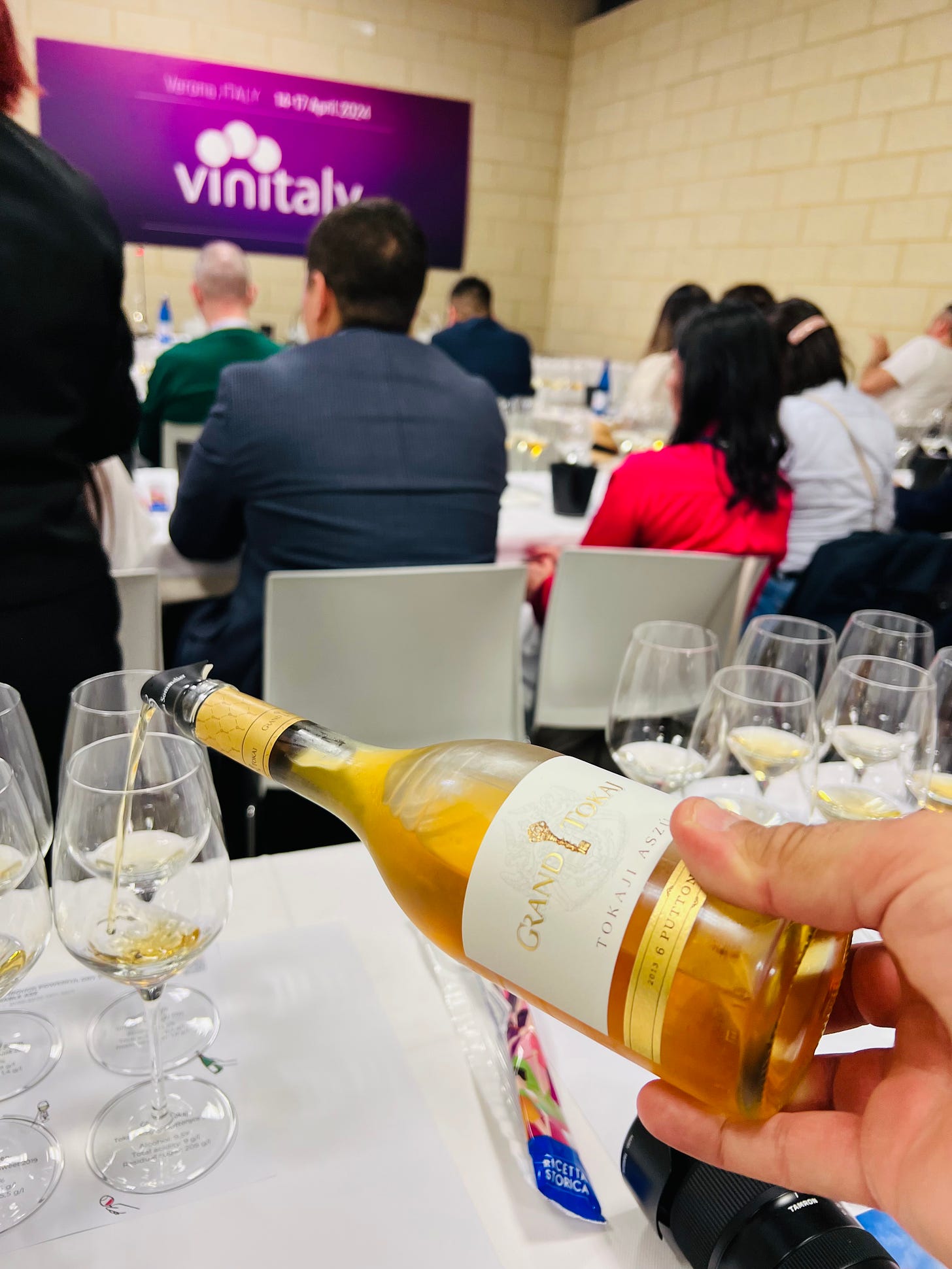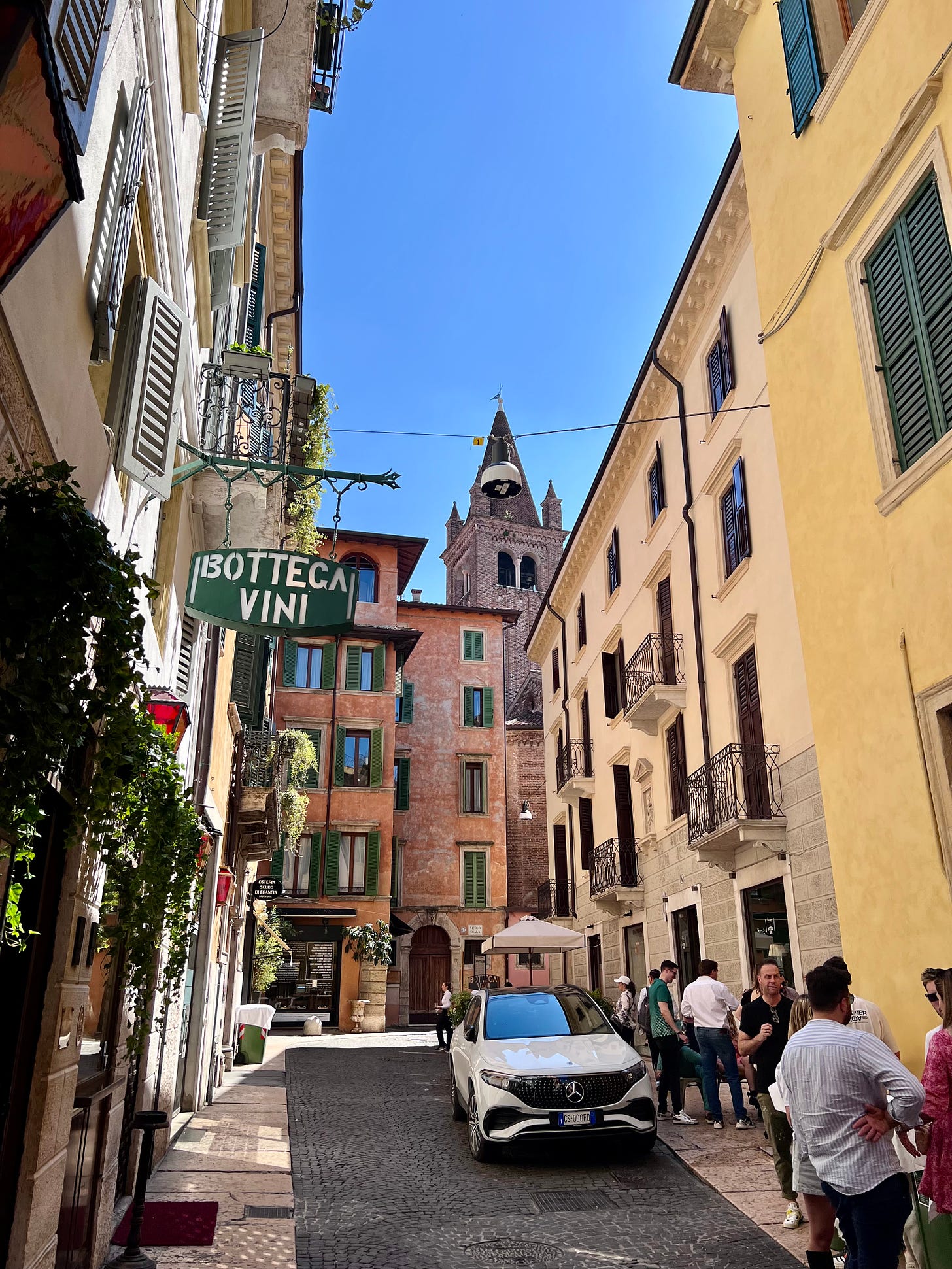I did not expect to be accepted to attend Vinitaly when I applied.
Once I received the good news, I had to scramble to find a place to stay in Verona for four nights. Most of the hotels were either booked or expensive. I went to bed one night feeling down, thinking I would not be able to go.
The next morning, I searched Airbnb and found a small apartment near Piazzetta Pescheria for an unbelievable rate – especially given it was Vinitaly week. The host provided an option to make two payments – and the reservation was also refundable up to 24 hours in advance. It was almost too good to be true – but it turned out to be perfect – only a 15-minute walk to Piazza Brà where I caught the daily shuttle to/from Vinitaly.
Sunday Afternoon in Verona
The first day, Sunday, I was exhausted from over 24 hours of travel and jet lagged from the nine-hour time difference, so I opted to sleep in, relax, and walk around and see some of Verona, made famous in Shakespeare’s classic play, Romeo and Juliet.
In fact, Romeo’s house was just down the street and around the corner from my apartment, Juliet’s house was a 10-minute walk, and the arena, 15 minutes away, adjacent to Piazza Brà.
I strolled down to the arena and back Via Giuseppe Mazzini – the pedestrian-only street known for its designer shops.
A sign outside of Signorvino – a wine shop and bar – drew me in.
There I enjoyed a tasting, a glass, a snack, and a bottle of wine to go.
I walked through Piazza della Erbe to see the Colonna Antica, Gardello Tower, Lamberti Tower, Madonna Verona Fountain – and to explore the busy market.
On my return to the apartment, I found a small grocery store, Tuday Conad, where I picked up some items for the apartment to save money on food.
Feeling a little like Juliet, I spent the evening on my balcony watching people and sipping the wine I had purchased earlier in the day.
Vinitaly
The next few days I spent trying to navigate the multiple buildings of Vinitaly at Veronafiere – my first international wine trade fair – which spans 100,000 square meters (1,076,400 square feet, around 24.7 acres) and whose attendance this year was around 97,000 people. Of course, I did not get to see and taste as much as I would have liked, but below are a few highlights.
Querciabella’s 50th Anniversary Tasting
My first tasting was with Querciabella, including the 2021 Chianti Classico, 2020 Chianti Classico Riserva, and 2021 Batàr, the latter which captured my attention due to its name. (Yes, it is what you think it resembles.)
2021 Querciabella Batàr
Querciabella’s lively and luscious answer to Bourgogne
Batàr is a blend of biodynamically farmed 50% Chardonnay and 50% Pinot Bianco that is aged for 9 months on the lees in fine French oak. This highly rated super Tuscan white is bright with citrus flavor and rich in texture – think zesty Meyer lemon curd wrapped in delicate creaminess – a wondrous white.
TILIA Estate
I wrote about TILIA Estate after meeting winemaker/vintner Matjaž Lemut in November 2023. This was our second meeting, a wonderful portfolio tasting alongside his Canadian importers – which led to a fun collaboration, the creation of the release notes for TILIA’s new 2023 Casanova Rosé, which you can read about in more detail at this link.
Photo credit Miha Krivic.
TILIA Estate Casanova Rosé 2023
Matjaž’s pink ‘mashup’ of Merlot, Barbera, and Pinot would make Casanova blush
TILIA’s inaugural still rosé is quite charming, guaranteed to turn heads – and palates – with its delicate salmon color and irresistible aromas and flavors of juicy strawberry, mouthwatering redcurrant, and zesty pink grapefruit. It is a quintessential apéritif – and a perfect match for ‘pink’ shellfish like crab, lobster, and shrimp – as well as charcuterie and smoked salmon. Seductive, spirited, and succulent – Casanova would be proud.
Wine Vision by Open Balkan: The Confluence of Tastes
It was a true joy to have the opportunity to attend the Wine Vision by Open Balkan masterclass that included eight wines from Albania, North Macedonia, and Serbia – a great overview – presented by Balkan sommelier, judge, and educator Igor Luković. Some of the wines I had originally tasted in November 2023, so it was fun to revisit them.
Korija Temjanika Korija 2023, North Macedonia
Quet Grašac 2020 Fruškogorski vinogradi, Serbia
Domaine Lepovo Chardonnay 2022, North Macedonia
Doja Prokupac 2019, Serbia
Zvonko Bogdan Cuvée No. 1 2019, Serbia
Çobo Vlosh E kuqja e Beratit 2019, Albania
Kantina Belba Papaz 2018, Albania
Kamnik Terroir Vranec Grand Reserva 2015, North Macedonia
Always a standout is the Doja Prokupac.
Doja Prokupac 2019, Toplica, Serbia
An award-winning taste of Serbian history
Doja's Prokupac – a native variety that dates to at least the 14th century – is Serbia's first BIWC trophy-winning red – and you get to taste why. It is the perfect trifecta of rich, ripe black fruits, minerality, and gentle oak space from nine months of barrel aging. Pair this elegant red with comfort foods like roasted poultry, grilled lamb or pork, and a side of potatoes.
A multidimensional Hungarian variety: Furmint
András Horkay, a Hungarian wine expert, led a Furmint masterclass that highlighted wines from Somló and Tokaj made in a variety of styles ranging from dry to sweet.
Harsányi Tokaj Megyer Furmint 2022
Kancellár Estate Somló Nagy Somlói Furmint 2019
Royal Tokaji Úrágya Furmint 2022
Royal Tokaji Szent Tamás Furmint 2020 Magnum
Harsányi Tokaj Tokaji Szamorodni Sweet 2019
Grand Tokaj Tokaji Aszú 6 Puttonyos 2013
Hungary is most well-known for its Tokaji Aszú, a wine made from botrytized grapes, whose sweetness is tamed by its vibrant acidity.
Grand Tokaj Winery Tokaji Aszú 6 Puttonyos 2013
Lush and luxe, this is everything you want in an Aszú
Grand Tokaj’s Aszú comes from one of the region’s best vintages – and the bottle age has only made this even more decadent. It is unabashedly full-bodied and rich with flavors like apricot compote, orange marmalade, and honey – plush a dash of baking spices. Creamy and sweet – but still lively with acidity – it lingers longingly, awaiting the next sip. Pair this with savory, fatty foods like foie gras and tangy blue cheeses – or desserts like crème brûlée or tarte Tatin.
Dear Verona
Four days and four nights were not nearly enough. They only whet my appetite for a longer visit – and another stay in the fortuitous Airbnb that made my inaugural visit possible.
The rest of Italy
You remain elusive, but I hope to discover more of your treasures. You are on my bucket list.
Ciao!
Elizabeth





